It is a truth universally acknowledged, that a figure skater in possession of an Olympics program, must be in want of a “Carmen.” Mirroring its ubiquity in opera houses season after season, it’s hard to think of a Winter Olympics in the last 50 years that hasn’t included at least one singles competitor or pair skating to a medley from Bizet’s most steadfast opera. Some games were particular boons: The 1988 Olympics in Calgary saw no fewer than four soloists and two pairs skating to a program in which “Carmen” made at least a cameo. Olympics correspondent Jack Whitaker called it a “heck of a year for Bizet.” Salt Lake City’s 2002 games stipulated that one of the ice dancing programs was to use Latin rhythms, resulting in a three-“Carmen” pileup on the ice.
Why? For one thing, figure skating—much like opera—has been overly-beholden to tradition. Until the 2014 Olympics in Sochi, skaters competing in every category except ice dancing had to hew to music without lyrics. Risk-averse skaters looking to come out on top in terms of both technical skill and artistic expression also tend to go for familiar music. Even without words, Bizet’s score for “Carmen” is a sonic double for its main characters. Susan McClary writes in Feminine Endings that the character Carmen’s melodic lines “tease and taunt, forcing the attention to dwell on the moment.” In her first aria, known familiarly as the “Habanera,” McClary notes that Carmen’s “descent by half-steps through the tetrachord D-to-A is arranged so that we grasp immediately the outline she implies (and thus are compelled to desire the suggested outcome); but the way she moves through that descent alternately coaxes and frustrates.”
In Culture on Ice: Figure Skating & Cultural Meaning, author Ellyn Kestnbaum notes a similarity between Carmen’s role and the sport’s longstanding association with femininity and, by extension, the male gaze. Character-driven programs became popular among male singles skaters beginning in the 1990s as a means for men to avoid “the effeminizing effects of positioning themselves as objects of the spectatorial gaze.” Which explains the influx of Escamillos on ice beginning in Lillehammer, Norway in 1994. “This is one of opera’s inspired and unconscious transferences,” Catherine Clément writes of this sonic connotation in Bizet’s work. “Music devoted to a woman convokes virile heroes.”

Of course, this isn’t the point of “Carmen” the opera. Nor is the point of Carmen the character, to borrow a phrase from Kestnbaum, to display an “overt seductiveness or more general sexual appeal or love interest.” As Stephanie Blythe told me last year, stagings of Bizet’s work have become “all about Carmen being able to pick up her skirt with her teeth, and that’s not what it’s about.… It’s about feelings and thoughts and instincts and identity.”
With all of this in mind, and over a chilled bottle of Russian Standard, I recently watched all of the extant videos of “Carmen” performances at the Olympics (covering games from 1976 to 2018), curious to see what feelings, thoughts, instincts, and identity were lurking behind the toe loops and spandex. What follows is a ranking of 35 performances. These aren’t so much based on the skates themselves—though I can tell you from experience the only comments section bitchier than a gaggle of opera queens is a murder of teenage girls who have a handful of skating lessons and the conviction that they know everything. Rather, in watching them all, what I really wanted to know was, who actually skated “Carmen”?

The Kinda-Carmens
These programs featured a blitz of Bizet, but for the most part La Carmencita vanishes.
- Yvonne Gómez (Spain), Women’s Free Skating, 1988: Gómez skated a solid overall long program that opens with “Carmen,” but it’s the weakest section that kicks off a mix spanning more than a century of music. In a year where there were too many “Carmen” programs to keep up, her flower has a short vase life.
- Zhao Guona (China), Women’s Short Program, 1994: Bookended by sections of the Farandole from Bizet’s “L’Arlesienne,” the opera’s Intermezzo gets more interesting choreography here. But you could play any other similarly-tempoed music underneath this performance and it would make just as much sense.
- Marina Kielmann (West Germany), Women’s Free Skating, 1988: Slightly more Carmen, but just as lackluster.
- Heather Kemkaran (Canada), Women’s Free Skating, 1980: The weirdest of the musical mashups, Kemkaran had the prelude to Act IV and the finale to Act II trade off with Strauss waltzes. In a Blue Danube of a skating dress, the “Carmen” component of this feels like an uninvited guest taking a corner of the table at an otherwise meticulously-planned dinner party.
- Charles Tickner (United States), Men’s Free Skating, 1980: I have a soft spot for Tickner, whose height and long limbs alway made me think of Gumby. A little bit of the “Habanera” is tucked in between a mashup of Beethoven’s “Moonlight” Sonata and selections from Massenet’s “Le Cid” and Bizet’s “L’Arlesienne.” But it’s an endearing bit—and perhaps the only male skater not to choose Escamillo’s aria.
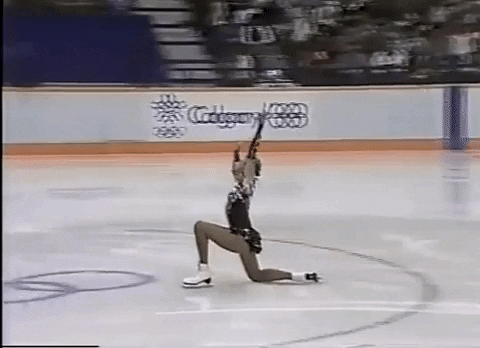
This the Remix
Just like Doja Cat and Nicki Minaj said.
- Kati Winkler and René Lohse (Germany), Original Dance, 2002: An organ opening like something out of Notre Dame combined with Nana Mouskouri’s Edith Piaf-y vocals on the “Habanera.” This program is better when it abandons Bizet’s music entirely for actual flamenco.
- Anna Rechnio (Poland), Women’s Free Skating, 1994: Xylophone “Carmen” with a disco-ified “Anvil” Chorus from Verdi’s “Il Trovatore.” Because, at that point, you may as well just go for it.
- Kateryna Kostenko and Roman Talan (Ukraine), Pairs’ Short Program, 2010: Techno “Carmen”! With the “Habanera” in a minor key! So edgy!
- Gabrielle Daleman (Canada), Women’s Short Program, 2018: It’s actually a nice skate, but I’m sorry: I can’t hear you over the sound of this Celine-Dion-Charlotte-Church hybrid who’s singing “L’amour est un oiseau rebelle.”
- Adelina Sotnikova (Russia), Women’s Short Program, 2014: Look, I know Sotnikova won the gold in Sochi, but did she rip her “Habanera” off of a midi file embedded on a GeoCities website circa 1998?
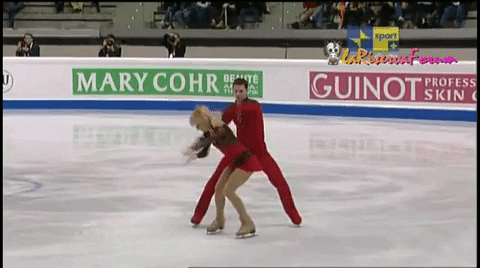
No Medals for Participation
Some people are seemingly made to skate “Carmen.” Others seem to be skating it to get the hell on with the rest of their careers.
- Manuela Ruben (West Germany), Women’s Free Skating, 1984: A “Carmen” program that has nothing to do with the love quadrangle and just shows our heroine rolling cigarettes for four minutes. Actually, that would be more interesting than this.
- Viktor Romanenkov (Estonia), Men’s Free Skating, 2014: The hand choreography of Spider Man and the posture of a croissant.
- Anita Östlund (Sweden), Women’s Short Program, 2018: I feel bad for Östlund afterwards as she sniffles her way through the results, but never send a Micaëla to do a Carmen’s job.
- Linda Fratianne (United States), Women’s Free Skating, 1980: Fratianne is unique on this list in that she skated to “Carmen” at two separate Olympics. By 1980, she seemed done with the music.
- Tatiana Navka and Roman Kostomarov (Russia), Free Dance, 2006: Some death-defying moves executed flawlessly, but watching Navka and Kostomarov skate is like watching every bad guy rival in every sports movie from the ’80s and ’90s: Having a flawless performance isn’t a substitute for having a personality.
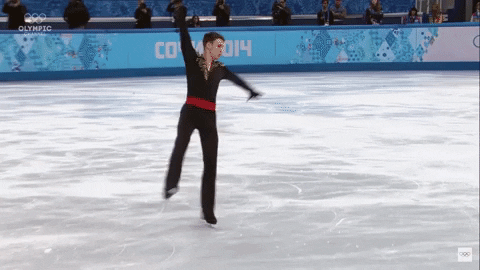
Did Anyone Google the Story?
I’m not saying you need to read Susan McClary’s Cambridge Opera Handbook on “Carmen” before you start tinkering with toreadors and triple Axels, but maybe just skim the Wikipedia page. Just a thought.
- Elizabet Tursynbaeva (Kazakhstan), Women’s Short Program, 2018: Tursynbaeva had just turned 18 when she skated this program in PyeongChang and looks 15 on the ice. Unfortunately, this is how I imagine the inspiration for a Disney animated feature based on “Carmen” would begin.
- Sasha Cohen (United States), Women’s Free Skating, 2002: Cohen skates to Don José’s “La fleur que tu m’avais jetée” like it’s “Nessun Dorma,” which reminds me of what Stephanie Blythe said of the “Flower” Song: “This is a guy who is either incredibly shy, or incredibly dark. Keeping everything just below the surface, never exploding.” The fact that Cohen took a couple of spills in this program seems like the music’s way of course-correcting.
- Lenka Kulovana (Czech Republic), Women’s Free Skating, 1998: Titled “Carmen,” Kulovana’s long program starts off strong and is skated elegantly throughout. But Bizet gives way to contemporary flamenco music and a Boston Pops-sounding orchestral interlude that sounds about as authentically Spanish as the Olive Garden is authentically Italian. In the end, it’s only vaguely Carmen.
- Ekaterina Gordeeva and Sergei Grinkov (USSR), Pairs’ Short Program, 1988: Much was made of Gordeeva’s age in these Olympics; she was 16 when she skated this program with a 21-year-old Grinkov. Thankfully, both opted for costumes made to look like bullfighter uniforms and focus on the “March of the Toréadors,” but it still feels like sending Mouseketeers into the bullring.
- Anjelika Krylova and Oleg Ovsyannikov (Russia), Free Dance, 1998: I know that a lot of the success of this lies in Krylova’s facial expressions and the chemistry she and Ovsyannikov shared on the ice, which is undeniable. Points, too, for using the Card Aria (indeed, for even knowing what the Card Aria is). But the choreography ultimately makes this look like a Punch and Judy show and ends with Carmen being the one to kill José.
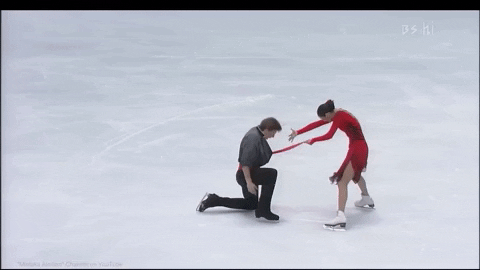
The latest from VAN, delivered straight to your inbox
Nothing to Say Here
Like many of Carmen’s lovers, these performances are perfectly fine and mostly forgettable.
- Linda Frantianne (United States), Women’s Short Program, 1976
- Denise Benning and Lyndon Johnson (Canada), Pairs’ Free Skating, 1988
- Marika Humphreys and Vitaliy Baranov (United Kingdom), Original Dance, 2002
- Vladimir Kovalyev (USSR), Men’s Short Program, 1976
- Oleg Tataurov (Russia), Men’s Short Program, 1994: Good, but a lot of it is in his “Are you not entertained!?” hands.

The Top Ten
- Elene Gedevanishvili (Georgia), Women’s Free Skating, 2010: Forget the choreography for just a second: When you see Gedevanishvili at the end of this program, holding her fist in a moment of glory and her gaze steely but also hungry for more, she simply is Carmen.
- Mirai Nagasu (United States), Women’s Free Skating, 2010: Less emotional depth in Nagasu’s “Carmen” as found in others, but once she gets on the ice, she never stops moving, combining mercurial and quicksilver speed with a faultless performance.
- Naomi Lang and Peter Tchernyshev (United States), Original Dance, 2002: The best of the pairs, Lang and Tchernyshev’s program is sexy, at times a little drunk on its own power, and compulsively watchable. Watching it, you feel like Frasquita or Mercédès following tabloid coverage of Carmen and Escamillo’s honeymoon phase; you can’t help but want them to win.
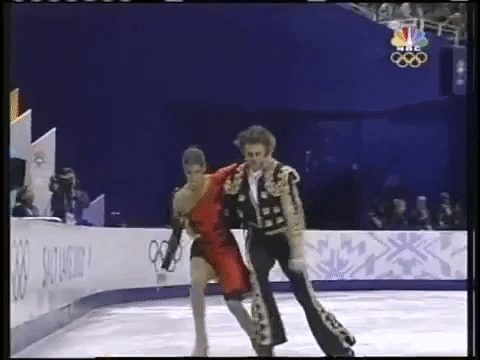
- Viktor Petrenko (Ukraine), Men’s Short Program, 1994: Lillehammer was a tough spot for Petrenko, who came into the games as one of the skaters to beat, but fell apart in this program with a few unexpected-but-fatal errors. In its own way, I find that most compelling to rewatch, akin to Peter Brook’s “La Tragédie de Carmen” in which the bull wins.
- Silvia Fontana (Italy), Women’s Free Skating, 2002: A criminally underrated performance in 2002 (coached, incidentally, by by Petrenko’s mother-in-law and choreographed by his wife), one of the most “Carmen” moments was when Fontana’s somewhat low scores were announced and the audience booed in response.
- Evgeni Plushenko (Russia), Men’s Free Skating, 2002: Plushenko had the audience, judges, and sportscasters eating out of the palm of his hand in 2002 with the biggest of Big Dick Energy. It doesn’t sustain well when he skates to the “Habanera,” but you’d expect Escamillo to make himself the main character in Carmen’s story.
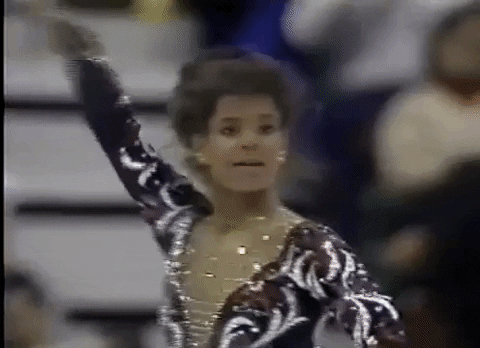
- Debra Thomas (United States), Women’s Free Skating, 1988: The 1988 games in Calgary will forever be associated with the “Battle of the Carmens,” a press-manufactured head-to-head showdown between the US’s Debi Thomas and East Germany’s Kati Witt. For her part, Thomas consulted with Mikhail Baryshnikov and worked with American Ballet Theatre choreographer George de la Peña, crafting a program that’s less about the plot of “Carmen” as it is about Carmen the character. Even for the flaws in this particular skate, which were enough to move Thomas down from a contender for the gold to earning the bronze, her performance—much like Bizet’s heroine—demands attention be paid. Better a Carmen who makes you feel something than one who is technically perfect.
- Evan Lysacek (United States), Men’s Free Skating, 2006: It’s rare that you see a man skate as José versus Escamillo. Even the pairs programs that end with Carmen’s death usually cast the man as the victorious bullfighter in order to show him as a medal-worthy hero. Lysacek’s 2006 long program was of its time and emo by comparison. But his deemphasis of Escamillo’s heroism and strength in favor of probing the ticking time bomb that is Don José—with razor-sharp choreography to match—makes it that much more fascinating to watch.
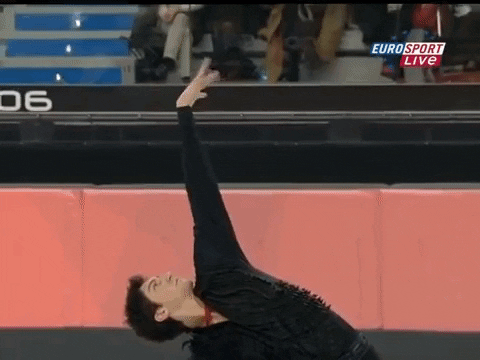
- Ivett Tóth (Hungary), Women’s Free Skating, 2018: Tóth combined this long program with a technical set to “Back in Black,” and the angles of her AC/DC choreography transfer well into this free skate, which favors Pina Bauschisms of thrusting limbs and emotional fluidity.
- Katarina Witt (East Germany), Women’s Free Skating, 1988: 34 years later and it’s still electrifying to watch, balancing the confidence of Carmen with the inevitability of her demise. This duality is subconsciously aided by the commentary: During the subsequent medal ceremony, former Olympian and ABC correspondent Jack Whitaker praised Witt (who took gold) as “a consummate flirt who can work a room as good as any Las Vegas performer.” It’s a comment that reminds us of the truth universally acknowledged in “Carmen”: A woman’s triumph ends the minute a man opens his mouth. ¶
Subscribers keep VAN running!
VAN is proud to be an independent classical music magazine thanks to our subscribers. For just over 10 cents a day, you can enjoy unlimited access to over 875 articles in our archives—and get new ones delivered straight to your inbox each week.
Not ready to commit to a full year?
You can test-drive VAN for one month for the price of a coffee.


Comments are closed.